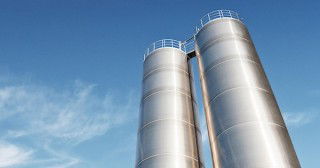Chemically the expectation for a cement clinker is that it will have the same overall chemical composition as the raw materials from which it is made, less any gaseous emissions and plus any ash provided by the fuels. However, much happens between the raw materials entering the raw mill and the emergence of the clinker.
Much of the variation in the bulk chemistry of the material passing through the system is related to the creation of dusts, some of which are removed and returned, some of which are not returned and some of which are cycled within the system.
Creation of dust
For a preheater or precalciner system, in the rotary kiln and in the clinker cooler some dust is produced by abrasion between clinker nodules. This is carried back through the kiln by the combustion gases, either through the kiln itself or through a tertiary air duct to rejoin the main kiln gases in the preheater tower. As it passes through the preheater it meets further dust recycled from the kiln inlet as the finer, lighter material is recycled and rejoins the hot gas. Closer to the feed injection point further fine dust is picked up and mixed with the rest of the fine material and all move to a dust collection device before the stack, either an electrostatic precipitator or bag filter. Where possible this is usually returned to the kiln although a small portion, chemically insignificant, may escape to atmosphere. Inevitably the dust which is returned from the filter will be of a different composition to that of the original feed, due to segregation of the finest, least dense material from the denser, coarser material.
If a bypass is present then some dust will be removed from the kiln. The purpose of a bypass is selectively to remove a particular fraction of the kiln charge, therefore it is to be expected that this will change the overall composition of the resulting clinker relative to the raw feed composition.
